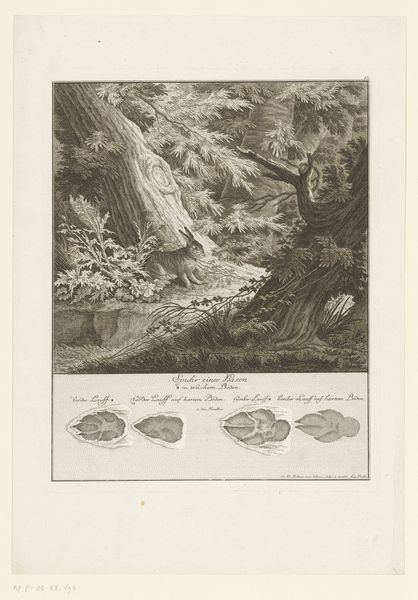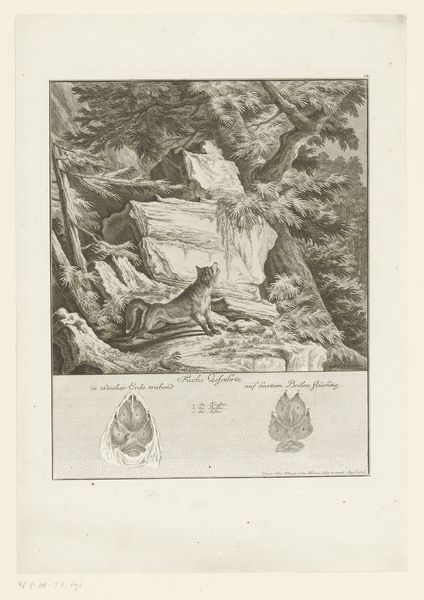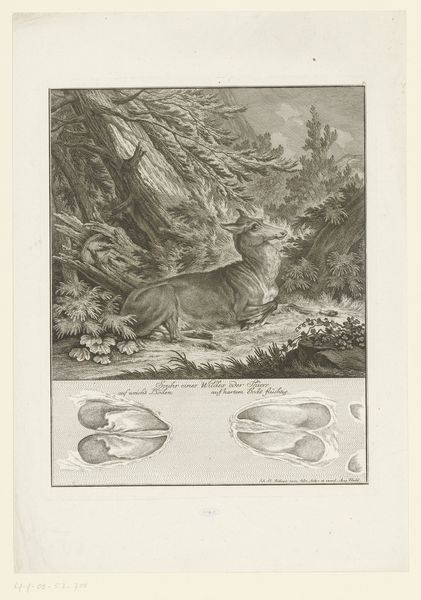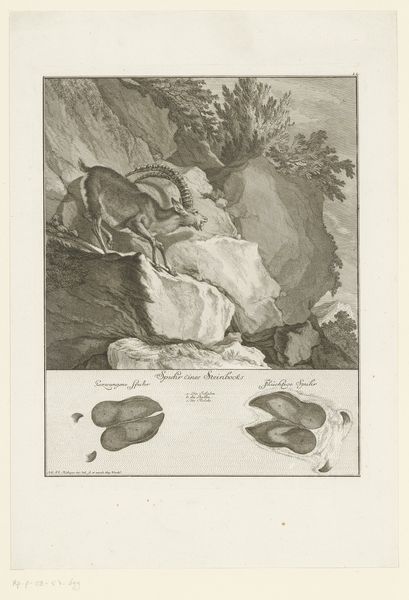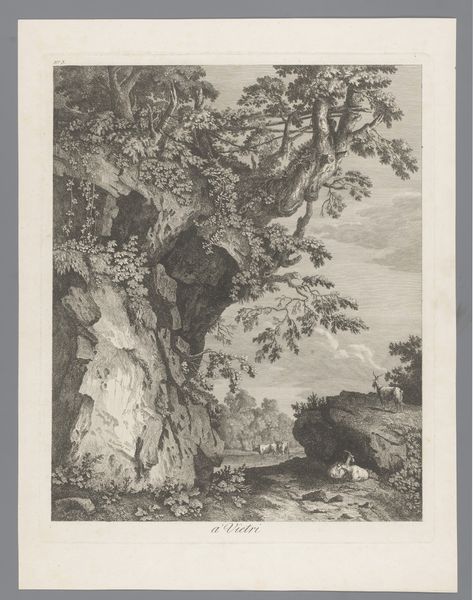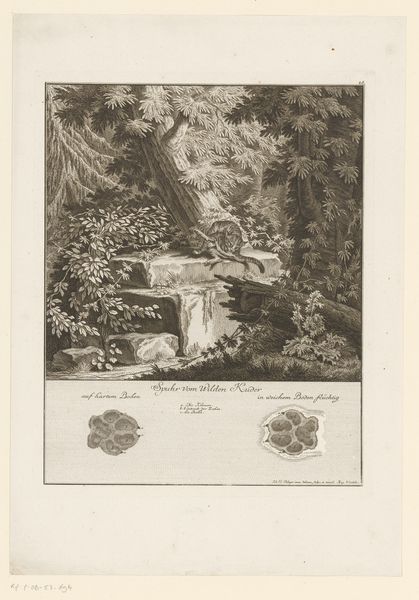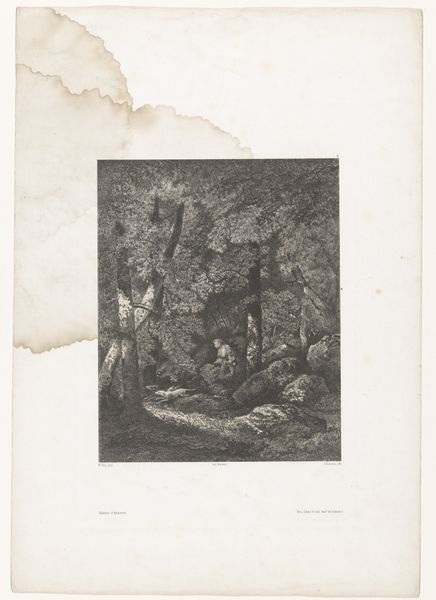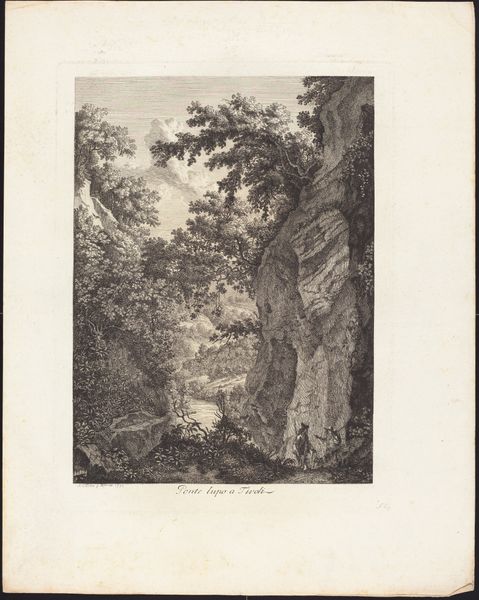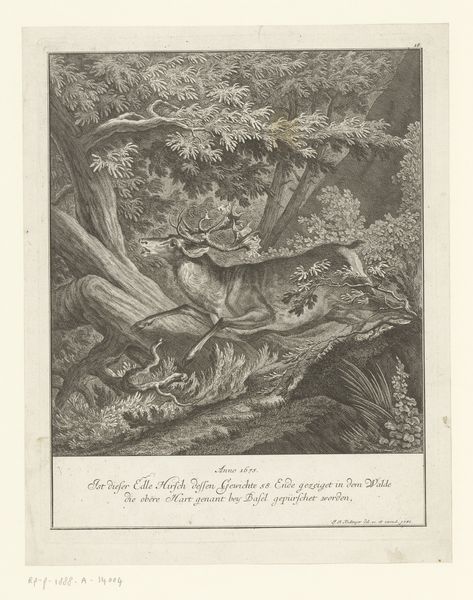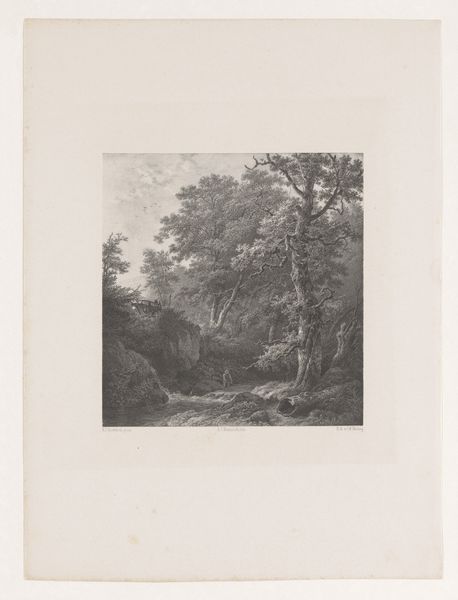
print, engraving
#
baroque
#
animal
#
ink paper printed
# print
#
landscape
#
form
#
forest
#
history-painting
#
engraving
#
realism
Dimensions: height 376 mm, width 303 mm
Copyright: Rijks Museum: Open Domain
Curator: So, what are your initial thoughts looking at this etching? For me, the sheer meticulous detail feels like a love letter to the forest. Editor: My first impression? Methodical. Cool, clinical even. Not exactly brimming with forest love, though I grant you, it's undeniably detailed. All that stark realism. This feels like less of a bucolic scene, and more like… evidence. Curator: Perhaps that's part of its peculiar charm! This is "Das met spoor", which translates roughly to "The badger with its tracks," an engraving dating back to 1751 by Johann Elias Ridinger. He’s known for these incredibly precise depictions of animals in their habitats. Look at the texture of the trees and that burrow! I feel I could crawl right in there and hide with him! Editor: Precision, certainly. But what kind of precision? A highly gendered and colonial impulse permeates these images. "Mapping" and ordering the "natural" world have long served to dispossess and dehumanize. Do we see an ecosystem here, or a specimen being classified? A badger going about its life, or one foot-printed, categorized, knowable? Curator: That's a rather… intense reading, isn't it? It seems Ridinger had such genuine admiration for his subject! This isn't some sterile scientific study. It’s almost reverential, seeing the badger as both an individual and as part of a balanced world. You can tell that this particular engraver thought of art in similar way a botanist thinks about flora and fauna. The style, in line with its time, blends history painting, landscape and Baroque elements, don't you think? It's an almost obsessive rendition that to me echoes the magic of the old growth forests. Editor: I acknowledge that. But that “magic”, that idealized and somewhat naïve "balance," often ignores the messy reality of exploitation, human and animal. Where are the other voices, the ones affected by this presumed harmony? This feels like conservation-as-domination dressed up in pretty strokes of ink. Curator: Well, perhaps our badger here would see things differently, given half a chance! Maybe, from his perspective, he thinks we have the whole thing wrong, obsessing over lines on paper while he’s got real worms to unearth. What do you reckon? Editor: Maybe. Or maybe that badger is smarter than we give him credit for and recognizes he's being neatly framed within a system he can't escape. Food for thought. Curator: Indeed. As is this fascinating piece altogether. Thanks for digging into the track with me!
Comments
No comments
Be the first to comment and join the conversation on the ultimate creative platform.
